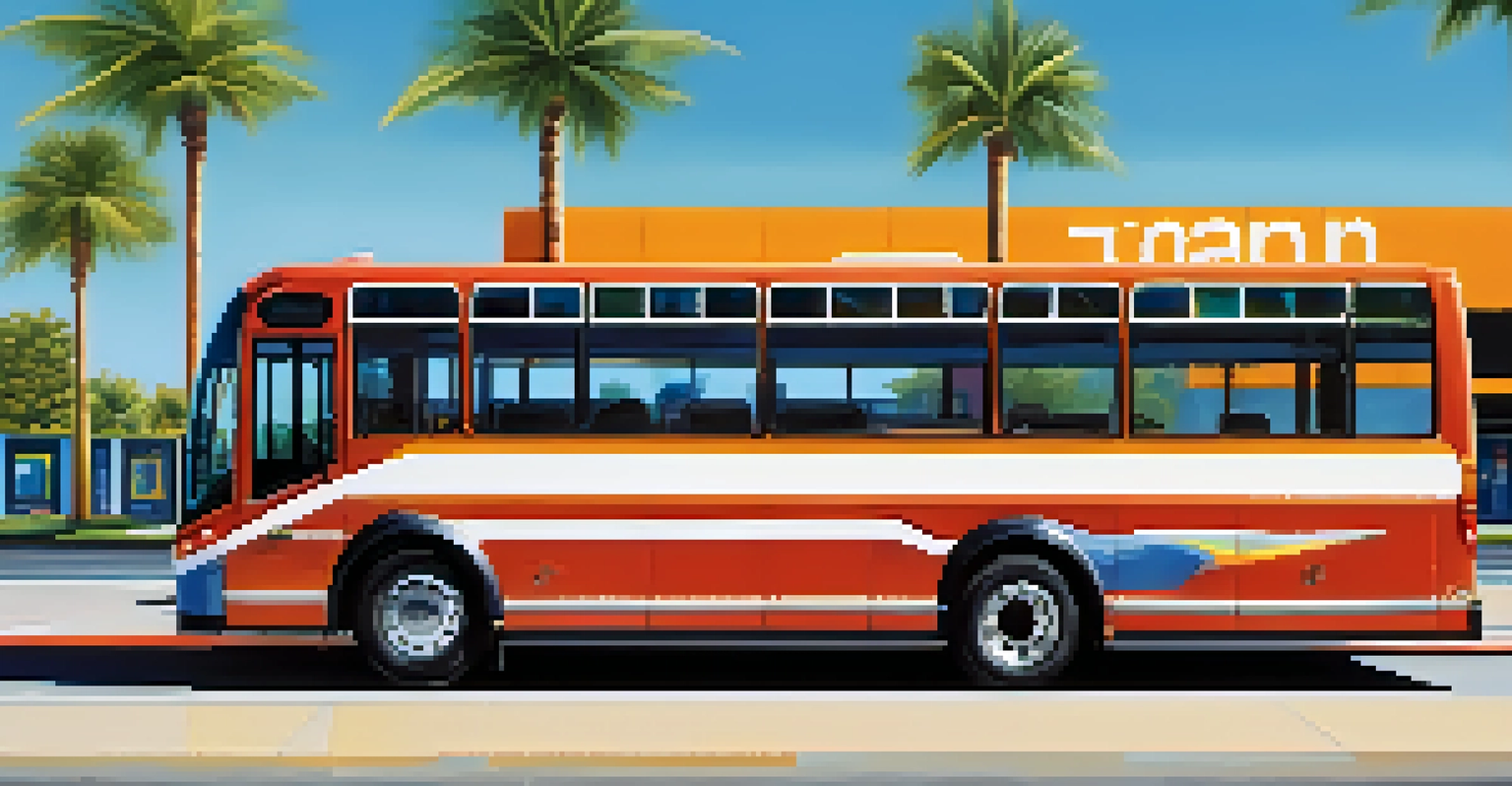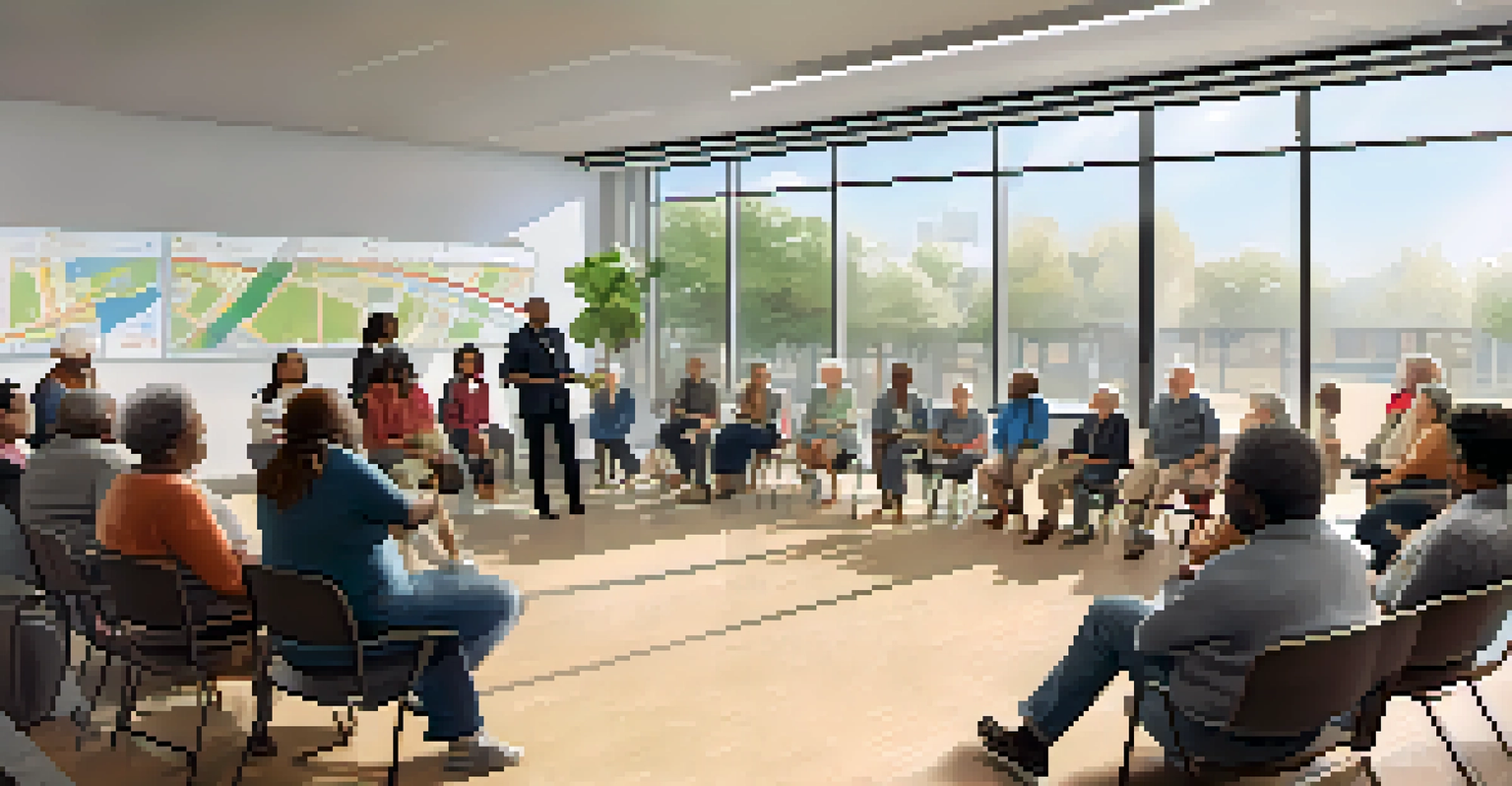Public Transit Accessibility in Phoenix: Barriers and Solutions

Understanding Public Transit Accessibility in Phoenix
Public transit accessibility is crucial for ensuring that all residents can travel freely and independently. In Phoenix, this concept encompasses not just physical access to transportation but also the availability of services that cater to diverse needs. Accessibility means that everyone, including those with disabilities, the elderly, and low-income individuals, can easily use public transit without barriers.
Accessibility is not a privilege; it's a right. Everyone deserves the chance to participate in their community without barriers.
In a rapidly growing city like Phoenix, where public transit options are vital for connecting communities, understanding accessibility is more important than ever. The integration of accessible services can significantly improve the quality of life for many residents. This understanding sets the stage for identifying barriers and potential solutions in the public transit system.
As we delve deeper into the topic, it becomes clear that addressing accessibility is not just about compliance with laws; it's about fostering inclusivity. This mindset encourages us to explore how we can create a transit system that serves everyone effectively.
Identifying Key Barriers to Accessibility
Despite efforts to improve public transit in Phoenix, several barriers still hinder accessibility. One major issue is the lack of adequate infrastructure, such as ramps, elevators, and designated seating areas. These physical barriers can make it incredibly challenging for individuals with mobility impairments to access public transit options comfortably and safely.

Additionally, communication barriers can prevent individuals from fully understanding available services. For example, transit information is often not provided in multiple languages or formats, making it difficult for non-English speakers or those with visual impairments. This lack of information contributes to a sense of alienation and discourages people from using public transit.
Barriers Hinder Transit Access
Physical, communication, and service limitations create significant obstacles for residents in using public transit effectively.
Lastly, limited service hours and routes can restrict access for many residents, particularly those who work odd hours or live in less accessible areas. These barriers indicate a need for comprehensive solutions that address the various challenges faced by different communities within Phoenix.
Impact of Barriers on Residents’ Lives
The barriers to public transit accessibility have profound effects on residents' daily lives. For individuals with disabilities, navigating a transit system without proper accommodations can lead to missed appointments, job opportunities, and social isolation. This not only affects their independence but also their overall quality of life.
Public transportation is a lifeline for many. When it’s accessible, it opens doors to opportunities for all.
Moreover, these barriers can perpetuate cycles of poverty among low-income families who rely on public transport to access jobs and services. When transportation options are limited, individuals may find it difficult to secure stable employment, thus affecting their financial stability. This creates a ripple effect that impacts the broader community.
It's essential to recognize that public transit should be a lifeline for all residents, not a source of frustration. By understanding the real-life implications of these barriers, we can better advocate for necessary changes and improvements within the system.
Community Engagement in Accessibility Solutions
Engaging the community is a vital step toward finding effective solutions for public transit accessibility. Listening to the experiences and suggestions of residents can provide valuable insights into the specific challenges they face. Local advocacy groups often play a crucial role in amplifying these voices and pushing for change.
Workshops and public forums can serve as platforms for community members to share their stories and propose ideas. By fostering open dialogue, transit authorities can gain a deeper understanding of the needs of diverse populations. This collaborative approach encourages the development of services that genuinely meet the needs of the community.
Community Engagement Enhances Solutions
Involving residents in discussions about their transit experiences leads to more effective and relevant accessibility solutions.
Ultimately, community engagement helps to create a sense of ownership among residents, making them active participants in the process. This sense of involvement can lead to stronger advocacy for improved accessibility and a transit system that works for everyone.
Technological Innovations Enhancing Accessibility
Technology offers exciting possibilities for improving public transit accessibility in Phoenix. Mobile apps that provide real-time information about transit schedules, delays, and route changes can empower users to navigate the system more efficiently. These tools are particularly helpful for individuals with disabilities who may need additional support in planning their journeys.
Moreover, advancements in vehicle design, such as low-floor buses and accessible vans, can significantly enhance physical access for those with mobility challenges. These vehicles are designed to accommodate wheelchairs and other assistive devices, making public transit a more viable option for everyone. Additionally, features like audible announcements and visual displays can assist passengers with sensory impairments.
As technology continues to evolve, integrating these innovations into the public transit system can create a more inclusive environment. By embracing these advancements, Phoenix can ensure that all residents have equal access to transportation and the opportunities it brings.
Policy Changes Needed for Improved Accessibility
Policy changes are essential to drive meaningful improvements in public transit accessibility in Phoenix. This includes enforcing stricter regulations regarding accessibility standards for public transport vehicles and infrastructure. By ensuring that these standards are met, we can create a more consistent and reliable transit experience for all users.
Additionally, funding and resources must be allocated specifically for accessibility enhancements. This could involve increasing budgets for infrastructure improvements, expanding service hours, and providing training for transit staff on accommodating diverse needs. Such investments can yield significant long-term benefits for the community.
Tech Innovations Improve Accessibility
Advancements in technology, such as mobile apps and accessible vehicle designs, can greatly enhance public transit accessibility for all users.
Lastly, collaboration between government agencies, transit authorities, and advocacy groups is crucial. By working together, these stakeholders can create comprehensive strategies that address both immediate and long-term accessibility challenges within the transit system.
Future Vision for Accessible Public Transit in Phoenix
Imagining a future where public transit in Phoenix is fully accessible is not just a dream; it’s a possibility that requires commitment and action. A transit system that prioritizes accessibility ensures that everyone has the opportunity to participate in the community and economy. This vision includes seamless connections between different modes of transport, making travel easier for all.
In this future, advanced technologies will play a pivotal role, providing real-time information and personalized travel assistance to users. Additionally, a focus on sustainable transport options will ensure that accessibility doesn't come at the expense of environmental responsibility. This holistic approach can foster a vibrant, inclusive community.

To achieve this vision, it's essential to harness the collective power of residents, policymakers, and transit authorities. Together, they can create a public transit system that not only meets current needs but anticipates future demands, ensuring accessibility for generations to come.